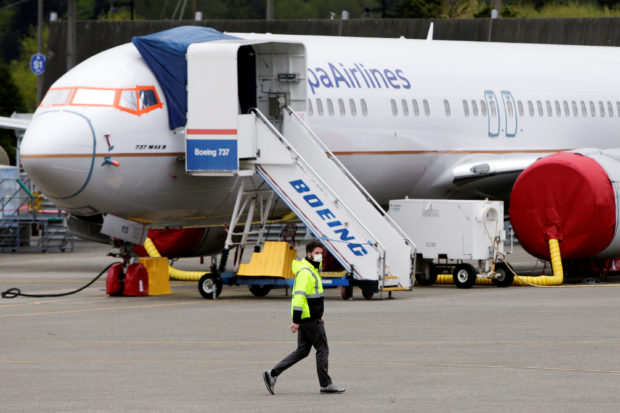
FILE PHOTO: A worker wears a mask at the Boeing Renton Factory, where 737 MAX airliners are manufactured, as commercial airplane production resumes following a suspension of operations last month in response to the coronavirus pandemic as efforts continue to help slow the spread of the coronavirus disease (COVID-19) in Renton, Washington, U.S. April 21, 2020. REUTERS/Jason Redmond
WASHINGTON — The US Centers for Disease Control and Prevention on Monday issued a “strong recommendation” that all passengers and employees on airplanes, trains, subways, buses, taxis and ride-share vehicles should wear masks to prevent the spread of COVID-19.
The interim guidance also calls for facial coverings at transportation hubs like airports and train stations.
“Broad and routine utilization of masks on our transportation systems will protect Americans and provide confidence that we can once again travel more safely even during this pandemic,” the CDC said.
Airlines, Amtrak and most public transit systems and U.S. airports already require all passengers and workers to wear facial coverings, as do most airports, and ride-sharing firms Uber and Lyft.
But the White House in July opposed language in a bill before Congress that would have mandated all airline, train and public transit passengers and workers to wear masks. The White House did not immediately comment on the CDC recommendation.
In July, the White House Office of Management and Budget said legislation requiring masks was “overly restrictive.” It added that “such decisions should be left to states, local governments, transportation systems, and public health leaders.”
The CDC said transport operators should ensure all passengers and employees wear masks “for the duration of travel” and should provide information to “people purchasing tickets or otherwise booking transportation” on the need to wear masks, as well as where possible making masks available.
It said transit operators could exempt children under two or people with written instructions from a medical provider.